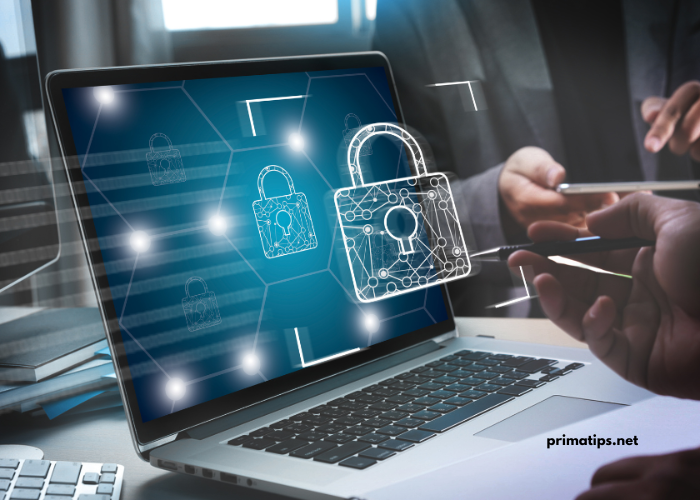Cybersecurity in 2025: Protecting Your Digital Life
In the rapidly evolving digital world, the concept of cybersecurity is more crucial than ever. As we move towards 2025, the threats to digital assets, from personal information to corporate databases, are only becoming more sophisticated and widespread. The digital age has introduced new opportunities and conveniences, but it has also brought about risks that threaten the safety and security of users. Cybercriminals are now utilizing advanced technologies, such as AI, to launch attacks, making the need for robust cybersecurity measures even more urgent. This article explores the future of cybersecurity in 2025, highlighting emerging threats, innovations, and essential practices for protecting your digital life.
The Growing Importance of Cybersecurity in 2025
With the increase in data breaches, ransomware attacks, and identity thefts, cybersecurity is no longer just a concern for businesses and large organizations. Individuals, families, and even small enterprises are now prime targets for cybercriminals. According to recent reports, cybercrime damages are expected to reach $10.5 trillion annually by 2025, a staggering figure that reflects the gravity of the issue.
The increasing reliance on digital platforms for communication, banking, shopping, and work has created a situation where cybersecurity is not just a technical challenge, but a critical aspect of everyday life. From social media to cloud computing and smart home devices, the interconnectedness of the digital world has made it easier for attackers to exploit vulnerabilities and compromise security.
Key Cybersecurity Challenges in 2025
As we look ahead, several key challenges will define the cybersecurity landscape in 2025. These include the growing complexity of cyber threats, the rise of sophisticated attack methods, and the increasing value of personal and business data.
1. Advanced Persistent Threats (APTs)
Advanced Persistent Threats (APTs) are one of the most serious cybersecurity threats expected to dominate in 2025. These threats are typically carried out by well-funded and highly skilled cybercriminal groups or nation-states. APTs involve prolonged and targeted attacks against specific individuals or organizations, often going unnoticed for long periods of time. The attackers use a variety of techniques, including phishing, malware, and zero-day exploits, to infiltrate networks and steal sensitive information.
2. AI-Powered Attacks
Artificial Intelligence (AI) is both a boon and a bane for cybersecurity. While AI-powered tools can help strengthen defenses, cybercriminals are also leveraging AI to create highly sophisticated and personalized attacks. Machine learning algorithms can be used to analyze large volumes of data and identify vulnerabilities in systems faster than human hackers ever could. In 2025, AI-powered attacks will be more common, making it essential for cybersecurity systems to evolve in tandem with these new threats.
3. Ransomware and Extortion
Ransomware attacks, where hackers encrypt an organization’s data and demand payment for its release, have become a significant concern in recent years. In 2025, this threat is expected to evolve. Attackers may no longer just hold data hostage; they could begin using ransomware as a tool for extortion by threatening to release sensitive data unless demands are met. This adds an extra layer of complexity to ransomware attacks, making it even more difficult to defend against.
4. Internet of Things (IoT) Vulnerabilities
With the rise of the Internet of Things (IoT), where everyday devices are connected to the internet, the potential attack surface for cybercriminals has grown exponentially. By 2025, IoT devices will be even more prevalent in homes and businesses. From smart refrigerators to health-monitoring wearables, the data these devices collect can be a goldmine for hackers if not properly secured. Ensuring the security of IoT devices will be one of the biggest cybersecurity challenges of the coming years.
How to Protect Your Digital Life in 2025
As cyber threats continue to evolve, it is crucial to adopt a proactive and multi-layered approach to cybersecurity. Here are some essential practices that will help you protect your digital life in 2025.
1. Strengthen Your Passwords
In 2025, using weak or easily guessable passwords will no longer be acceptable. Cybercriminals are becoming increasingly adept at cracking passwords using brute-force techniques and AI-powered algorithms. To protect your digital life, make sure your passwords are long, unique, and contain a mix of letters, numbers, and special characters.
Using a password manager is a great way to manage complex passwords across multiple accounts. Additionally, implementing multi-factor authentication (MFA) provides an extra layer of protection by requiring a second verification step, such as a fingerprint or text message, before granting access.
2. Keep Software Up to Date
Cybercriminals often exploit vulnerabilities in outdated software to launch attacks. In 2025, software vendors will continue to release security patches to address known vulnerabilities. It’s essential to keep your operating system, applications, and antivirus software up to date to ensure you are protected against the latest threats. Many cyberattacks target devices and systems that are not regularly updated, making software updates an essential part of your defense strategy.
3. Invest in Advanced Antivirus and Anti-Malware Tools
As cybercriminals develop more sophisticated methods of attack, traditional antivirus software may no longer be enough to protect you. By 2025, the need for advanced antivirus solutions powered by AI and machine learning will be essential. These tools can detect new and evolving malware, ransomware, and zero-day exploits, providing real-time protection against emerging threats.
Additionally, anti-malware software should be regularly updated to detect new types of malicious software. Some modern solutions offer advanced features, such as real-time threat detection, sandboxing, and behavior analysis, to stop attacks before they can cause harm.
4. Use a Virtual Private Network (VPN)
In 2025, protecting your online privacy will be more important than ever. One of the best ways to safeguard your internet traffic is by using a Virtual Private Network (VPN). A VPN encrypts your internet connection, making it much harder for hackers or third parties to intercept your data. It also masks your IP address, providing an extra layer of anonymity when browsing the web.
Using a VPN is especially important when connecting to public Wi-Fi networks, which are notorious for being unsecured and vulnerable to cyberattacks. A VPN ensures that your data remains encrypted, even on untrusted networks.
5. Monitor Your Accounts and Data
In 2025, data breaches will continue to be a significant threat to individuals and organizations alike. Once personal data is exposed, it can be used for identity theft, fraud, and other malicious activities. To protect yourself, regularly monitor your bank accounts, credit reports, and online profiles for signs of suspicious activity.
Consider subscribing to identity theft protection services, which can alert you if your personal information is being misused. Additionally, enabling account activity alerts for your financial accounts ensures that you are notified of any unauthorized transactions in real time.
6. Secure Your IoT Devices
As more devices become connected to the internet, securing your IoT devices will become a top priority in 2025. Many IoT devices have weak or outdated security measures, making them vulnerable to hacking. To protect your digital life, change the default passwords on all your connected devices and ensure they have the latest firmware updates.
Consider investing in a dedicated IoT security solution, which can monitor and protect the devices on your network. Additionally, segmenting your network into different zones can help limit the potential damage caused by a breach in an IoT device.
7. Educate Yourself and Your Family
Cybersecurity is not just about having the right tools in place; it’s also about being aware of potential threats and knowing how to avoid them. Educating yourself and your family about common cyber threats, such as phishing scams and social engineering tactics, is essential in 2025. Many cyberattacks begin with human error, such as clicking on a malicious link or downloading an infected attachment.
Consider investing in cybersecurity training for your family, especially children and older adults, who may be more vulnerable to certain types of attacks. Teaching good cybersecurity hygiene, such as recognizing phishing emails and not sharing personal information online, can go a long way in protecting your digital life.
Conclusion
As we approach 2025, cybersecurity will continue to be a critical component of our digital lives. With the rapid pace of technological advancements and the increasing sophistication of cybercriminals, it is essential to stay vigilant and proactive in safeguarding your personal and business data. By following best practices such as strengthening passwords, using VPNs, updating software, and securing IoT devices, you can reduce your risk of falling victim to cyberattacks.
As we move forward, it is clear that cybersecurity will not only be about technology but also about awareness, education, and adapting to an ever-changing threat landscape. By taking the necessary steps now, you can protect your digital life and ensure that you stay one step ahead of cybercriminals in 2025 and beyond.













